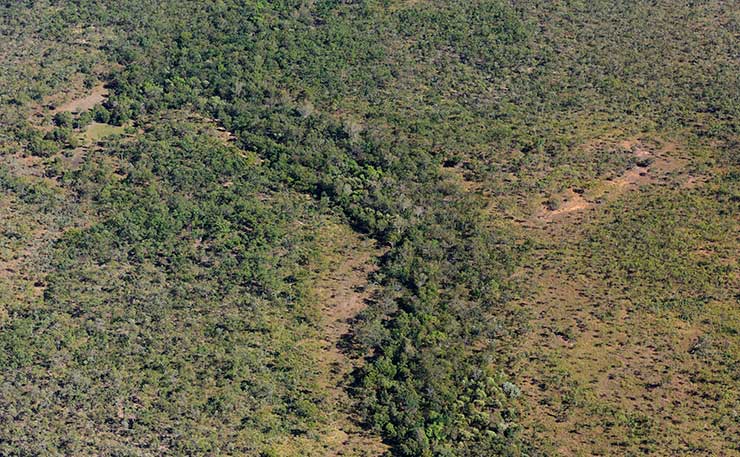A project where government and traditional owners work together to protect precious natural resources should be a model for future agreements, writes Andrew Picone.
For the last 20 years, the Australian Conservation Foundation has worked with Traditional Owners, Government and other NGOs in support of establishing new national parks on Aboriginal land in Cape York Peninsula.
The newest of these, declared this week, is the 16,490 hectare Ngaynggarr National Park, 40 kilometres northwest of Hope Vale.
This new park protects ancient sandstone escarpments rich in cultural sites, endemic scarlet-gum forests and habitat for threatened species.
While creating new parks, a concurrent process has also seen the return of existing national parks to Aboriginal ownership. Today, there are 23 Aboriginal-owned and jointly managed national parks in the region totalling almost two million hectares.
The Queensland government’s rethink of national parks, which began with new legislation enabling Aboriginal ownership in 2007, better protects the rights and interests of Traditional Owners while helping Australia meet international commitments to protect biodiversity.
Earlier this year the Palaszczuk government strengthened this approach with amendments to Queensland’s Nature Conservation Act.
Welcoming this move, Michael Ross, Chairman of the Olkola Aboriginal Corporation who own over 300,000 hectares of national park on Cape York, rightly declared: “It’s our country. It’s our land they (Queensland Government) are talking about, and it always will be no matter which Government is in power.”
While the purpose of national parks remains focused on nature conservation, there is now increasing acknowledgement that this should not be to the exclusion of living Indigenous cultures.
Having walked with elders amongst ancient ceremonial grounds, helped collect bark from long-used medicine trees and learnt why you cannot swim or fish in certain waterholes, my appreciation for the cultural complexity of landscapes has only grown with these lived experiences.
Since 1981 when the first jointly managed national park was established as Garig National Park on the Northern Territory’s Cobourg Peninsula, joint management arrangements have become increasingly sophisticated.
The landmark Cape York tenure resolution program delivers a leading consent based model of negotiating new Aboriginal owned national parks. This unique process has been supported by successive Queensland governments of all persuasions for nearly twenty years and has resulted in almost all state land on Cape York Peninsula including existing national parks, timber reserves and resource areas being handed back to Aboriginal ownership. This model will soon be extended to the World Heritage listed Daintree National Park.
The benefits of joint management include diversified employment opportunities and an increase in revenue streams for national parks. In remote regions there are also significant socio-economic benefits, with an increasing number of Indigenous rangers across the sector. Career opportunities, niche tourism and cultural maintenance all arise from the joint management approach and the growth in ranger enterprises.
Well-managed land tenure initiatives like the one taking place on Cape York this week are significant because they enable the protection of values through inclusive cultural interpretations and management of the landscape.
This model of joint management is setting a high bar for other governments and Traditional Owner groups to follow.
Donate To New Matilda
New Matilda is a small, independent media outlet. We survive through reader contributions, and never losing a lawsuit. If you got something from this article, giving something back helps us to continue speaking truth to power. Every little bit counts.





